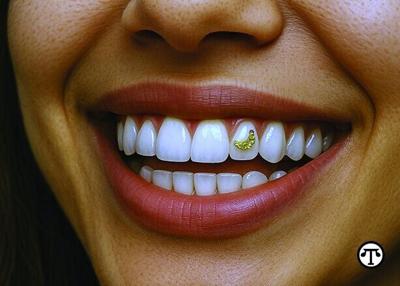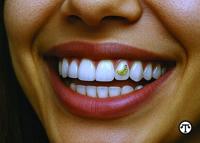(NAPSI)—Oral jewelry comes in many forms, but whether it’s a lip ring, a tongue stud, barbells, hoops, or tooth gems, they all come with a warning from dentists. Putting some sparkle into your smile means taking precautions to avoid costly issues with your dental health.
Dentists see all sorts of piercings and add-ons to smiles these days—piercings are typically inserted into the tongue, lips or gums, even cheeks. Some people opt for gemstones attached directly to teeth. Other types of bling include grills and ornamental crowns.
The Problem
“While oral jewelry can make your smile unique, it can also lead to irreversible damage to your teeth and gums,” said Nadia Fugate, DMD, Delta Dental of Washington’s associate dental director and member dentist. “Additionally, the chance of an oral infection is higher because of the vast number of bacteria in your mouth. Good dental health habits can help mitigate some of the risk, but ultimately oral jewelry is a risky proposition for long-term oral health.”
According to the American Dental Association, oral piercing complications are relatively common. In one study, tooth damage was seen in 26% of individuals with tongue piercings, while 44% of people with tongue jewelry—and half of those with lip piercings—experienced gum damage, bone loss or recession. Unfortunately, recession can’t be reversed, but treatment can prevent it from getting worse. In some cases, treatment may require surgery. Most oral surgeries for receding gums involve grafting tissue from a different part of the mouth, which then covers exposed roots, reduces tooth sensitivity and improves the appearance of the affected teeth.
The wearer can often have a hard time keeping the area around the piercing clean and that can lead to a build-up of plaque. Other potential problems include nerve damage in the tongue and lips, which can cause numbness, loss of function, taste, oral motor control and can even affect your speech. Allergic reactions can occur in people susceptible to the material used for the jewelry. Piercings can also lead to difficulties with speech and swallowing. Knowing the potential risks of having the oral jewelry and educating yourself on mitigating that risk is a key aspect of having an oral piercing.
What You Can Do
While there is no one way to guarantee good oral health for those who make the decision to have a piercing, it’s important to use an antimicrobial mouth rinse to keep the wound clean. The first five days after the piercing, individuals can expect pain and swelling and mouth rinse can help alleviate the chance of infection.
Pierced individuals should also be advised to maintain a standard oral hygiene regiment that includes brushing twice a day for two minutes, using fluoride toothpaste and a soft bristle toothbrush, flossing once a day and visiting their dentist twice a year for checkups.
Learn More
For more information about oral health, visit at Delta Dental of Washington’s blog https://www.deltadentalwa.com/blog.
Editors Note: This content is approved for Washington state publications only.
Word Count: 472



